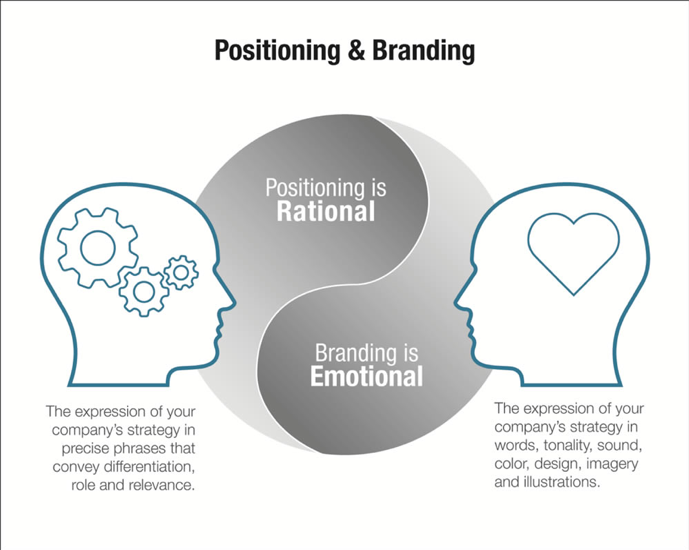Why Do Growth Companies Stop Growing? Can the CMO Restart Growth?
By Elizabeth Giuffrida, CMO at CMO Grow.com
I am a hopeless romantic. And “RomComs” are my absolute favorite film genre. I love the simplicity of the girl meets boy plot and the sentimentality of the protagonist’s rollercoaster ride to true love. Shakespeare once said, “The course of true love never did run smooth.”
Interestingly, the same could be said about business—I’m referring to the “run smooth” part, of course. Many if not most growth companies experience an inflection point—a significant change in the progress of the company, customarily a perceptible slowdown in growth. Similar to the romcom rollercoaster, this experience can be sickening, like a rollercoaster drop so steep that it makes a bungee jump seem like child’s play. There are myriad reasons that companies reach an inflection point—economic down-turn, changes in the competitive landscape, challenges with supply chain, failure to identify new opportunities, market saturation, losing their connection to the customer, lack of innovation, and many more.
So how do some companies prosper, while others struggle to keep the lights on? It comes down to a company’s ability to create a blueprint for success.
Take the blinders off! Don’t be the unsuspecting and complacent romcom protagonist, who is completely unaware of the impending conflict. Just because the sales team is hitting it out of the park this month, this quarter, or this year, doesn’t mean that the rest of the business is running smoothly. Similarly, a great NPS doesn’t mean that you can stop product innovation. Organizations that have a transparent and communicative process for reviewing metrics (aka key performance indicators or KPIs) can more easily identify areas of the business that could be susceptible to an inflection point. This candid self-analysis coupled with the honest answering of some tough questions can and will accelerate your company’s ability to see gaps in critical areas—namely, people, product, and process, and allow you the opportunity to pivot or in some cases execute an outright strategic transformation.
Questions you might ask:
• Do we have the right people in the right roles?
• Do we need to recruit new talent?
• Is our product still relevant or do we need to innovate?
• Do we need to augment our product line? Or sunset old products? Or both?
• Do we need expansion capital? Or did we expand too much? Or too quickly?
• Does our distribution model still work? Or do we need to develop new channel partners?
• Is our pricing still competitive?
• Do we need new systems to streamline operations?
If you don’t look at your business as a whole, you may risk your only opportunity to create and actualize a blueprint for success that propels you through inflection points. I’ve personally found this process of self-evaluation challenging for some companies, at least initially. This is especially true of newer companies with $5 or $10 million in sales, where the leadership team that built the company may not be the leadership team that can grow the company—at least not without some level of transformation.
Most companies reach their first inflection point at about $5 or $10 million in sales. The reason for this is that your people, product, and process don’t necessarily need to be dialed in for this level of success. However, to overcome and continue to grow past an inflection point, a company needs to make changes, it needs to transform—sometimes a little and sometimes a lot. But before you run off and start implementing a bunch of changes, perhaps you should take a step back and ask yourself if you’ve laid the groundwork necessary to restart growth.
Whether you have $10 million or $100 million in sales, if you’ve hit an inflection point, it may be time to revisit your position in the market or visit it for the first time in some cases. Positioning is different from branding and actually comes before branding. So, if you’ve branded your company without first going through the rigor of positioning, it’s likely that your brand is unconvincing and possibly inauthentic. Precisely identifying the position you own in the mind of your prospect is key to laying the groundwork required to create a blueprint for success. And comes down to two simple questions—"Who are you?” and “Why do you matter?”
If you cannot concisely answer these questions, then how are you going to convince people to buy your products and/or services over those of your competitors? Although challenging, answering these questions is essential to forming your company’s positioning statement … and a positioning statement is essential to cohesively align your entire organization around what your company stands for. Positioning is the “secret sauce.”

In our overcommunicated society your company and the products and services you offer need to own a position in the mind of your prospect, a position that is unique and authentic to you. Make no mistake, developing your positioning statement is no easy task and cannot be done in a vacuum, nor can it be the sole responsibility of your CMO or Marketing department. The key stakeholders of your company need to be engaged, starting with the CEO. The position you own in the mind of your prospect is a concept that needs to live and breathe throughout your company. Everyone needs to buy into it. And it needs to be at the core of decisions made at every level.
The Internet along with social media have created a level of transparency which limits, if not completely eliminates, a company’s ability to create an image that is not authentically theirs. For this reason, your positioning must reflect the real you—who you are and why you matter. Your positioning is then manifest in your brand, which is why positioning comes first. In essence, your brand is the emotional outward expression of your internal rational positioning (Figure 1). Once solidified, it will eliminate confusion about what your company stands for, enable you to streamline company-wide decision making around your people, product, and process, and optimize opportunities for growth—all of which enable you to create a blueprint for success.

Image by Andy Cunningham
So how do you prepare for future inflection points?
- Diligently measure and analyze key metrics to spot trends (good and bad) in your business and/or the market.
- Ask yourself tough questions about your people, product, and process.
- Be open to transformation, especially strategic transformation.
- Stay true to who you are and why you matter (positioning)—inauthentic perceptions don’t sell.
- Create a blueprint for success and be ready to implement it at every inflection point.
- Rinse. And repeat.
Much like the white-knuckled rollercoaster ride of a really good, albeit cheesy, rom-com, an organization's journey through an inflection point can conjure feelings of nausea. But once collaboratively navigated, a path for impending growth lay ahead.
Elizabeth Giuffrida is CMO and managing partner of the growth strategy consultancy, CMOGrow, a boutique agency focused on empowering companies with a robust sales and marketing blueprint for growth and performance.